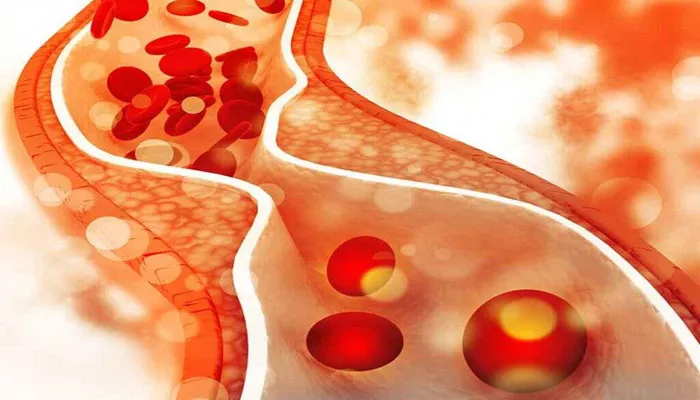Acute Coronary Syndrome (ACS) represents a critical spectrum of conditions that arise from the sudden reduction of blood flow to the heart. It encompasses a range of serious conditions that can significantly impact heart function and overall health. In this comprehensive article, we will delve into the nuances of ACS, exploring its definitions, types, symptoms, diagnostic methods, treatment options, and preventive strategies. By the end of this article, you’ll have a thorough understanding of what ACS includes and why it’s a critical area of focus in cardiology.
What Is Acute Coronary Syndrome?
Acute Coronary Syndrome refers to a group of symptoms associated with sudden and reduced blood flow to the heart. This interruption in blood flow typically results from the rupture of an atherosclerotic plaque within the coronary arteries, leading to thrombosis (blood clot formation) and subsequent myocardial ischemia (reduced oxygen supply to the heart muscle). ACS is a medical emergency requiring immediate attention to prevent severe heart damage or even death.
Types of Acute Coronary Syndrome
ACS is classified into three primary types, each with distinct characteristics and implications:
1. ST-Elevation Myocardial Infarction (STEMI)
STEMI is a severe form of ACS that occurs when there is a prolonged period of blocked blood supply to a part of the heart.
This blockage causes significant damage to the heart muscle. The term “ST-Elevation” refers to a specific pattern seen on an electrocardiogram (ECG) that indicates a full-thickness myocardial infarction.
Key Features of STEMI:
Immediate Onset: Symptoms often develop suddenly and can be intense.
ECG Changes: Elevated ST-segment on an ECG is a hallmark.
Prolonged Ischemia: Extended duration of blockage leads to significant heart muscle damage.
2. Non-ST-Elevation Myocardial Infarction (NSTEMI)
NSTEMI is similar to STEMI but involves a partial blockage of the coronary artery. This results in a less severe level of ischemia compared to STEMI. The damage to the heart muscle is still significant, but the clinical presentation and ECG findings differ.
Key Features of NSTEMI:
Variable Onset: Symptoms can be less acute and may not be as severe initially.
ECG Changes: Typically, no ST-segment elevation, but other changes may be present.
Myocardial Injury: Still involves heart muscle damage but to a lesser extent compared to STEMI.
SEE ALSO: Can You Reduce Cholesterol in Arteries?
3. Unstable Angina
Unstable Angina is considered the least severe form of ACS but is still a critical condition. It is characterized by chest pain or discomfort that occurs unpredictably and is more severe or frequent than stable angina. It does not result in significant heart muscle damage but signals a higher risk for myocardial infarction.
Key Features of Unstable Angina:
Pain Frequency: Pain occurs more frequently and with less exertion than stable angina.
No ECG Changes: Typically, there are no significant ST-segment changes on the ECG.
No Cardiac Biomarkers: Blood tests may not show elevated levels of cardiac biomarkers, unlike STEMI or NSTEMI.
Recognizing The Symptoms of Acute Coronary Syndrome
Identifying ACS symptoms promptly is crucial for timely intervention and management. While symptoms can vary, some common signs include:
1. Chest Pain or Discomfort
Chest pain is the most common symptom of ACS. It may present as a feeling of pressure, squeezing, or fullness in the chest.
The pain may radiate to the left arm, neck, jaw, or back.
2. Shortness of Breath
Difficulty breathing or shortness of breath can occur, often accompanying chest pain or discomfort.
3. Nausea and Vomiting
Some individuals may experience nausea, vomiting, or a feeling of indigestion during an ACS event.
4. Sweating
Profuse sweating or cold, clammy skin can be indicative of ACS.
5. Dizziness or Lightheadedness
Feeling faint, dizzy, or lightheaded, especially when combined with chest pain, may signal ACS.
6. Fatigue
Unexplained fatigue or weakness, particularly in women, can be a subtle sign of ACS.
Note: Symptoms can vary widely among individuals, and some, particularly women and diabetics, may experience atypical symptoms.
Diagnostic Methods for Acute Coronary Syndrome
Accurate and timely diagnosis of ACS is essential for effective treatment. Several diagnostic tools and tests are employed to evaluate the presence and severity of ACS:
1. Electrocardiogram (ECG)
An ECG is a critical diagnostic tool for ACS. It records the electrical activity of the heart and can reveal characteristic changes associated with STEMI and NSTEMI. The presence of ST-segment elevation or depression can guide the diagnosis and treatment approach.
2. Cardiac Biomarkers
Blood tests for cardiac biomarkers such as troponin, creatine kinase-MB (CK-MB), and myoglobin are crucial. Elevated levels of these biomarkers indicate myocardial injury and help differentiate between STEMI, NSTEMI, and unstable angina.
3. Chest X-Ray
A chest X-ray can provide information about the size and shape of the heart and assess for other conditions that might mimic or exacerbate ACS symptoms.
4. Coronary Angiography
Also known as coronary arteriography, this invasive procedure involves injecting contrast dye into the coronary arteries to visualize blood flow and identify blockages. It is often used to guide treatment decisions, including angioplasty and stenting.
5. Stress Testing
Stress tests, including exercise stress tests or pharmacological stress tests, evaluate how the heart performs under increased workload. They can be helpful in diagnosing stable angina and assessing overall cardiac function.
Conclusion
Acute Coronary Syndrome is a serious and potentially life-threatening condition that requires immediate medical attention.
Understanding the types, symptoms, diagnostic methods, treatment strategies, and preventive measures associated with ACS is essential for effective management and improved outcomes. By recognizing the signs of ACS, seeking prompt medical care, and adopting a heart-healthy lifestyle, individuals can significantly reduce their risk of experiencing a cardiac event and enhance their overall well-being.

